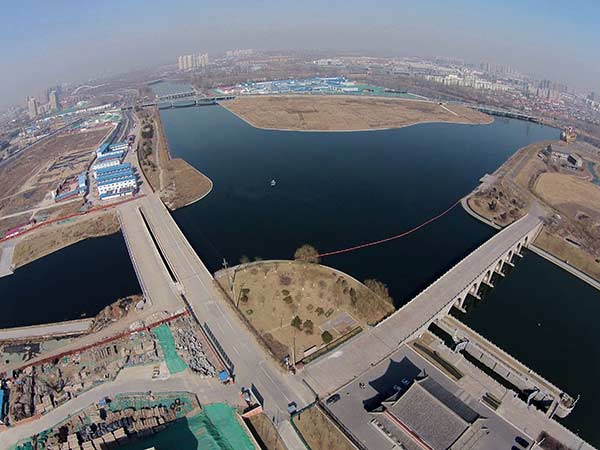Building a greener secondary city center
 |
|
The central business district of Tongzhou district is under construction.Zhang Chenling / Xinhua |
Beijing's new subcenter of Tongzhou will be built to the highest standards and incorporate the latest advances in science and technology, according to one of the capital's top officials.
Cai Qi, acting mayor of Beijing, made the comments during his first visit to Tongzhou district after being appointed last month. His tour of the area can be seen as reflecting the importance of its role in the capital's future development.
To boost the development of the capital's new subcenter and relieve some of the traffic congestion and overcrowding in downtown Beijing, the municipal government plans to move its major departments to Tongzhou by the end of 2017.
The office buildings that will house these departments are already under construction.
What is know as the "passive house" concept has been applied to their design, aiming to improve each building's energy efficiency and reduce its carbon footprint.
Advanced technology will be employed to cut the amount of energy needed for heating and cooling these new buildings, in a move that officials hope will help promote the passive house concept in China.
According to Beijing's civil building energy-saving plan for the 13th Five-Year-Plan period (2016-20), the capital will begin construction of more than 300,000 square meters of ultralow-energy buildings in the next four years. Tongzhou is set to develop such buildings on a large scale.
It is estimated that the two government office buildings that will incorporate the concept could use up to 60 percent less energy than traditional designs.
In addition to saving energy, the Internet Plus strategy is also being applied to Tongzhou's face-lift.
Hesteel Group, China's largest producer of iron and steel, is supplying much of the construction materials for the area's new office buildings, and has developed software that can provide quality certification through a mobile phone app - the first time in the country's history that such a service has been commercially rolled out.
Building information technology is constantly monitoring the construction schedule, calculating the time the project should take based on the allocated resources, capital and available labor.
If it finds that the project is behind schedule, it will automatically issue a warning to the management team. The project's leaders can then monitor the construction site manually.
dujuan@chinadaily.com.cn




















